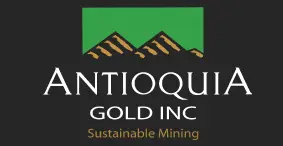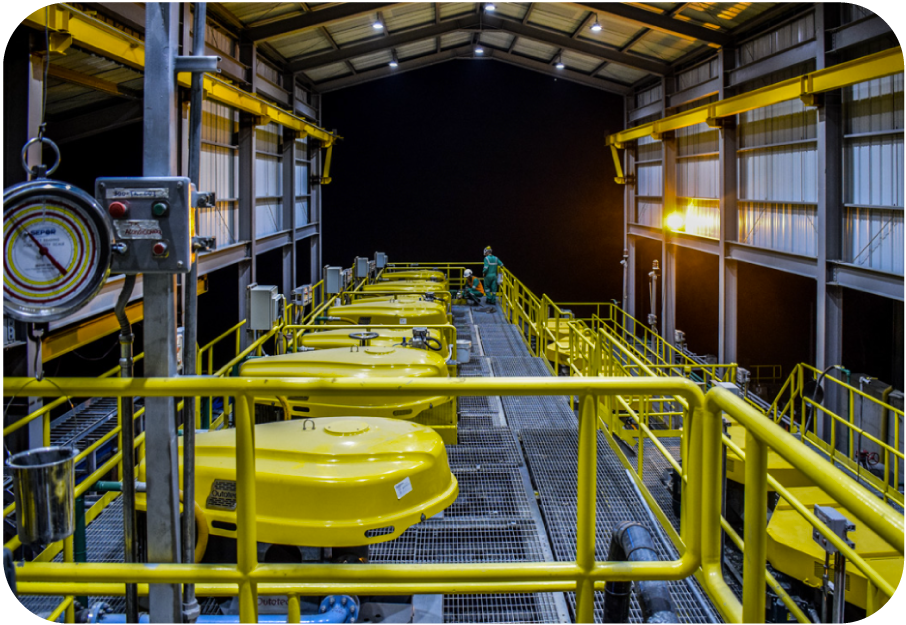ANTIOQUIA GOLD LTD.
CISNEROS GOLD PROJECT,
ANTIOQUIA DEPARTMENT, COLOMBIA
NI 43-101 TECHNICAL REPORT ON UPDATED MINERAL RESOURCE ESTIMATE
AND PRELIMINARY ECONOMIC ASSESSMENT
1.0 SUMMARY
1.1 INTRODUCTION
Linares Americas Consulting S.A.C. (LINAMEC) was retained by Antioquia Gold Ltd. (AGD) to prepare an update of the Mineral Resource Estimate and Preliminary Economic
Assessment (PEA) for the Cisneros gold project (the Project) located in the Department of Antioquia, Colombia.
The Cisneros 2017 Preliminary Economic Assessment (Cisneros 2017 PEA) has been prepared for AGD by LINAMEC and presents the results of underground sampling,
exploration drilling, mineral resource estimation, and mine planning on the Guaico and Nus zones for the redevelopment of the Cisneros Gold Project. This Technical Report
conforms to National Instrument 43-101 Standards of Disclosure for Mineral Projects (NI 43-101).
This new resource estimate incorporates the results of 14 drillholes drilled in 2016-2017 in the area known as “Guayabito Sur”, totalling 2,689.92 m and 992 channel samples
taken in the underground workings of the Guaico Mine. The mineralized structures, updated with new data are: Nus, Guaico, Footwall-03, Footwall-05, Vega and La Manuela01. The other areas, Guayabito North and Papi, remain unaltered.
1.2 PROPERTY DESCRIPTION, OWNERSHIP AND HISTORY
The property is located 55 km to northeast of Medellin and 2 km east of the town of Cisneros in the Department of Antioquia, Colombia. The Cisneros Property consists of
5,794.08 ha on eleven (11) concessions in the municipalities of Santo Domingo, Cisneros and Yolombo, centered at 75º08’25” W longitude and 06º32’35” N latitude. Antioquia Gold Ltd. holds a 100% interest in these mineral concessions.
The property was previously held by Am-Ves Resources Ltd. (Am-Ves) of Alberta. High American Gold Ltd. (now Antioquia Gold Ltd.) took over Am-Ves in a reverse takeover in
2008 and in March 2009 the two companies amalgamated to become Antioquia Gold Ltd. (Antioquia). A due diligence study and preliminary exploration program was conducted by Am-Ves in 2007 before its takeover by Antioquia. Moose Mountain Technical Services prepared a NI 43-101 Technical Report dated February 6, 2008 and updated it in
December 6, 2010, Linares Americas Consulting (LINAMEC) prepared a NI 43-101 Technical Report on Resource Estimation dated October 14, 2013 and a NI 43-101
Technical Report on Updated Mineral Resource Estimate dated July 16, 2017.
1.3 GEOLOGY & MINERALIZATION
The Cisneros Project lies within the Antioquia Batholith, that is lithologically homogeneous with little variation from one place to another. The normal facies have a tonalite to
granodiorite composition.
The Cisneros deposit is a porphyry related mesothermal lode-gold vein system. Gold is the primary economic metal. Mineralization occurs in narrow structural envelopes that are
called “veins” in this report. There are three principal gold zones with known resources, Guaico (NNE), Nus (EWE) and Guayabito (NE). They consist of various simple vein
structures and complex veins (Guayabito Zone).
The Cisneros Project area is transected (and geologically partitioned) by a set of regionally extensive East-West faults and NNE-SSW tensional faults, both are premineral, see Figure 7-3.
1.4 MINERAL RESOURCE ESTIMATE
The current mineral resource estimate (Antioquia Gold Ltd. Cisneros Gold Project, Antioquia Department, Colombia NI 43-101 Technical Report Update on Mineral Resource Estimate and Preliminary Economic Assessment, September 2017) is an update to the July 2017 resource estimate accompanied by a technical report prepared by LINAMEC and utilized ordinary kriging as the estimation methodology on a more extensive database. The resource for the Guayabito Deposit and the Papi Deposit, remains unaltered from 2013 and were estimated using inverse distance cubed (ID3) interpolation methodology.
The main objective was to publish revised mineral resource estimates for the Guaico Vein, Footwall-03 Vein, Footwall-05 Vein, Vega Vein, La Manuela Vein, Nus Vein and
Guayabito Sur veins. This updated resource estimate integrates 992 new channel samples taken in the underground workings in Guaico Mine. The mineral resources have
been defined taking into account the 2014 CIM Definition Standards for Mineral Resources and Mineral Reserves. The Mineral Resource Estimate has an effective date
of September 24, 2017, that is the cut-off date for information used in the estimation. Mineral resources that are not reserves do not have demonstrated economic viability.
Tables 1-1, 1-2 and 1-3 contains the summary of mineral resource estimates for the Cisneros Properties.
1.5 MINERAL PROCESSING AND METALLURGICAL TESTING
1.5.1 Metallurgical Testing
During the period 2010 to 2017, several metallurgical test campaigns were carried out with different mineralized materials from the Guayabito and Guaico zone of the Cisneros
Project, with the objective of characterizing the mineralization in terms of its disposition to be processed using conventional metallurgical technology.
The main objective of these metallurgical tests was to study the behavior of the mineralization under different working conditions in the processes of size reduction, gravity, flotation and cyanidation of the flotation concentrates. Finally, the direct cyanidation of the head feed was carried out in order to define an optimal scenario to recover the precious metals from the mineralization in the different exploitation zones.
In these metallurgical research campaigns, a number of different mineralized samples have been used to ensure that the results are as representative as possible of the proposed area of exploitation of the Cisneros Project.
The effect of gold grade on recovery is evident in the results of the tests carried out at G&T in 2010. Using combined gravity and flotation processes with head grades of 17.9 g/t
gold and 38.1 g/t gold achieved recoveries of 97% and 96%, for Guaico and Guayabito, respectively. Results of tests conducted at Met-Solve in 2015 showed similar recoveries
for head grades of 4.94 g/t gold and 5.64 g/t gold for the two mineralized zones.
The effect of particle size on gold extraction can be seen on the similarity of the recovery results of both laboratories, G&T and Met-Solve, shown in Table 13-17, for P80 grind size
between 100 and 109 microns, it is recommended to perform combined gravity and flotation tests on slightly coarser grind sizes, for example, at P80 = 120 to 150 microns, for
Guaico, Guayabito and Nus mineralization. It is not recommended to grind to finer sizes (P80 < 100 microns) because this could produce sludge in the feed, that would affect the flotation of sulfides, causing a reduction in gold recoveries.
The effect of flotation time on the Guaico and Guayabito mineralization is very similar, as indicated by metallurgical tests for two composites from Guaico and Guayabito zones, carried out by CMH in September 2013 where the kinetics of both samples were almost identical.
In conclusion, both Guaico and Guayabito have a very similar behavior in the flotation process and the gold associated with the iron sulfides is extracted quickly. The Guaico and Guayabito mineralization has fast kinetics indicating that the use of rougher circuits alone would reach gold recoveries close to 98%.
1.5.2 Mineral Processing
The objective of the metallurgical process is to obtain gravity concentrates and flotation concentrates in a plant with a capacity of 500 tonnes per day (tpd). The plant will be composed of a single production line in two conventional processes; gravity followed by flotation to obtain sulphide concentrates with gold contents.
The process route involves a dry section consisting of crushing (primary and secondary stages) and milling and a wet plant comprising gravity concentration, flotation and filtration of concentrates where gold is to be recovered.
The process plant has been designed to operate 347 days per year and treat 500 tonnes of mineral daily. The average head grade is estimated to be 6.43 g/t gold. An overall recovery of 90% is anticipated. Resources have been estimated at 784,763 tonnes with a life-of-mine (LoM) of 5.0 years. A mineral stockpile of 19,402 tonnes, resulting from the preparation of the stopes in the Guayabito and Guaico-Nus areas, will be maintained for the commissioning of the plant.
1.6 MINING METHOD AGD
has identified two mining units under evaluation for future exploitation, Guaico-Nus Mine and Guayabito Mine. The Guaico-Nus Mine is currently accessed by the Guaico portal and decline (4.5 m x 4.5 m and 12% gradient), and the Guayabito Mine is accessed by a portal and decline (4.5 m x 4.5 m and 12% gradient).
At the time of the site visit, the underground workings in Guaico-Nus mine had 5.3 km of development, mainly declines, drifts and cross-cuts. In the Guayabito Mine, the mine portal is complete and the main decline is 110 m long. The excavation is continuing in both mines.
The underground mining methods, selected for AGD are Cut & fill (C&F) and Longhole Open Stopping (LHOS). Mining method selection was determined primarily by deposit geometry and geomechanical features. C&F mining was the preferred mining method for the Guaico and Guayabito veins and longhole stoping for the Nus mineralized structure.
1.7 POTENTIALLY ECONOMIC RESOURCES
The potential production estimate for the Cisneros Project is based on the updated Mineral Resource Estimate Cisneros 2017 PEA. A total of 784,763 t with 6.43 g/t Au were estimated. Measured, Indicated and Inferred Resources were considered for the financial evaluation. The following assumptions were used to estimate Economic Mineral
Resources:
• The potential Economic Mineral Resources are inclusive in reported Mineral Resource Estimate for Cisneros 2017 PEA.
• Specific cut-off was calculated for Guaico, Nus and Guayabito structures. A cut-off of 2.95 g/t Au for Guaico, 2.62 g/t Au for Guayabito and 1.66 g/t Au for Nus was estimated.
• Metal price, productions, selling cost and recovery were considered as a major factor for the cut-off calculation.
• The gold price used in the financial evaluation was US$1,250/oz that corresponds to the average value for the last six months on the London Metal Exchange, this value was agreed with those responsible for AGD.
• Mining, processing and selling based in a preliminary internal mine plan for the Cisneros Project include:
o unit cost for mine activities,
o vertical and horizontal development for mineralization,
o direct cost for mill and concentrate,
o maintenance and overhead for mine and plant cost assuming 3,000 milled tonnes per month.
• General and administration cost and sustaining cost were not considered on the cutoff estimation.
• Guayabito Sur structures and Papi veins were not included. The Guayabito Sur structures need to be reinterpreted together with Guayabito North veins, and the inferred resources from Guayabito Sur have poor confidence. Papi veins are far away from Guaico and need more studies.
• Mineral resources 30 m below the topographic surface are not considered. Pillars 9 m in width along production levels, are considered to be left.
• Potential economic mineral resource includes 7,500 tonnes with 5.1 g/t Au contained in the historical stockpile, mineralization sourced from mine developments up to September 30, 2017 from Guaico Mine that includes mineralization from the Nus structure.
• A total of 784,763 T and 6.43 g/t Au of mineral resources was estimated. The summary of the Potential Economic Mineral Resources for the Cisneros PEA 2017 are shown in Table 1-4.
• Note that the economic assessment includes inferred mineral resources that are considered too speculative geologically to have the economic considerations applied to them that would enable them to be categorized as mineral reserves, and there is no certainty that the preliminary economic assessment will be realized.

